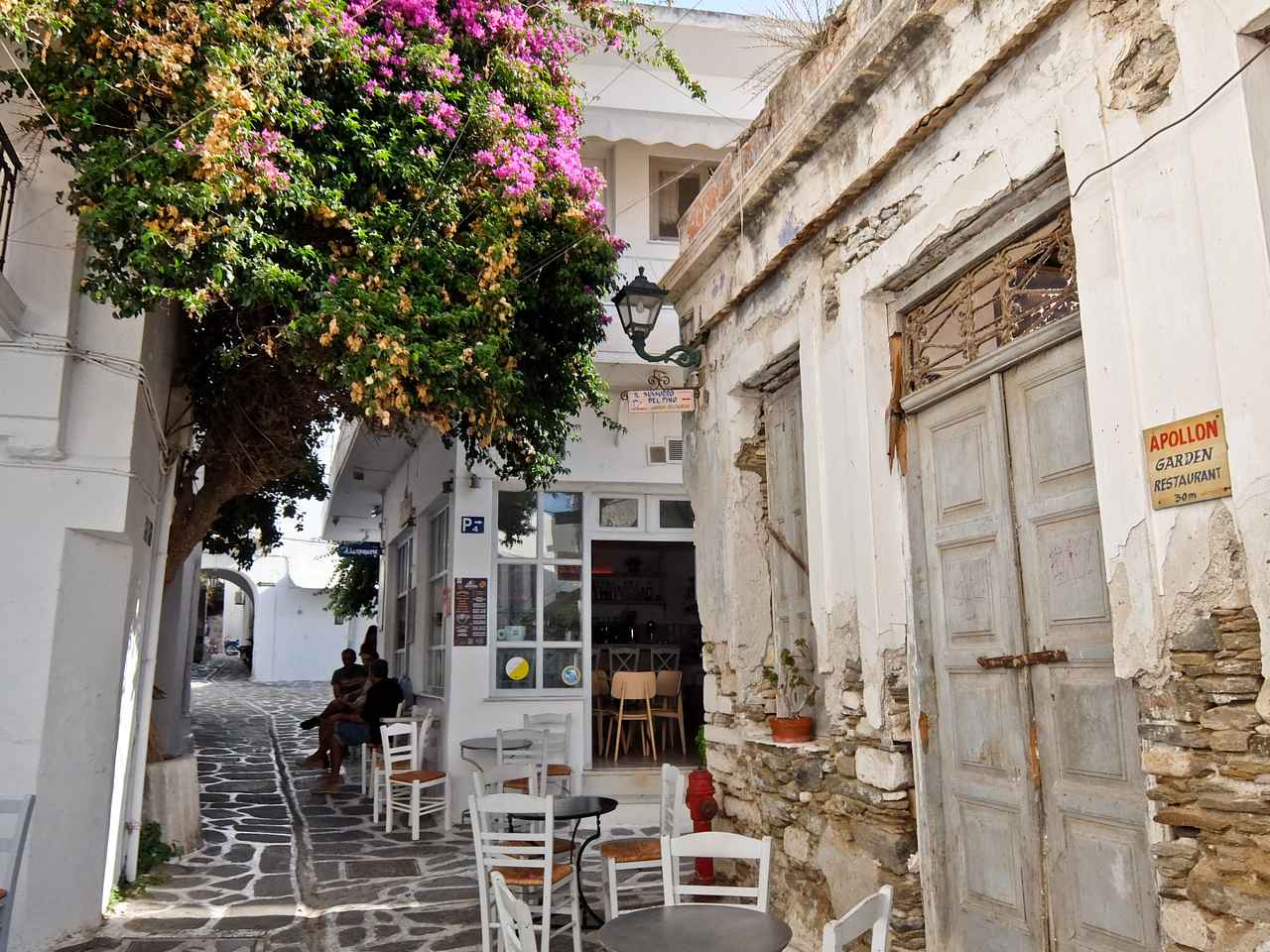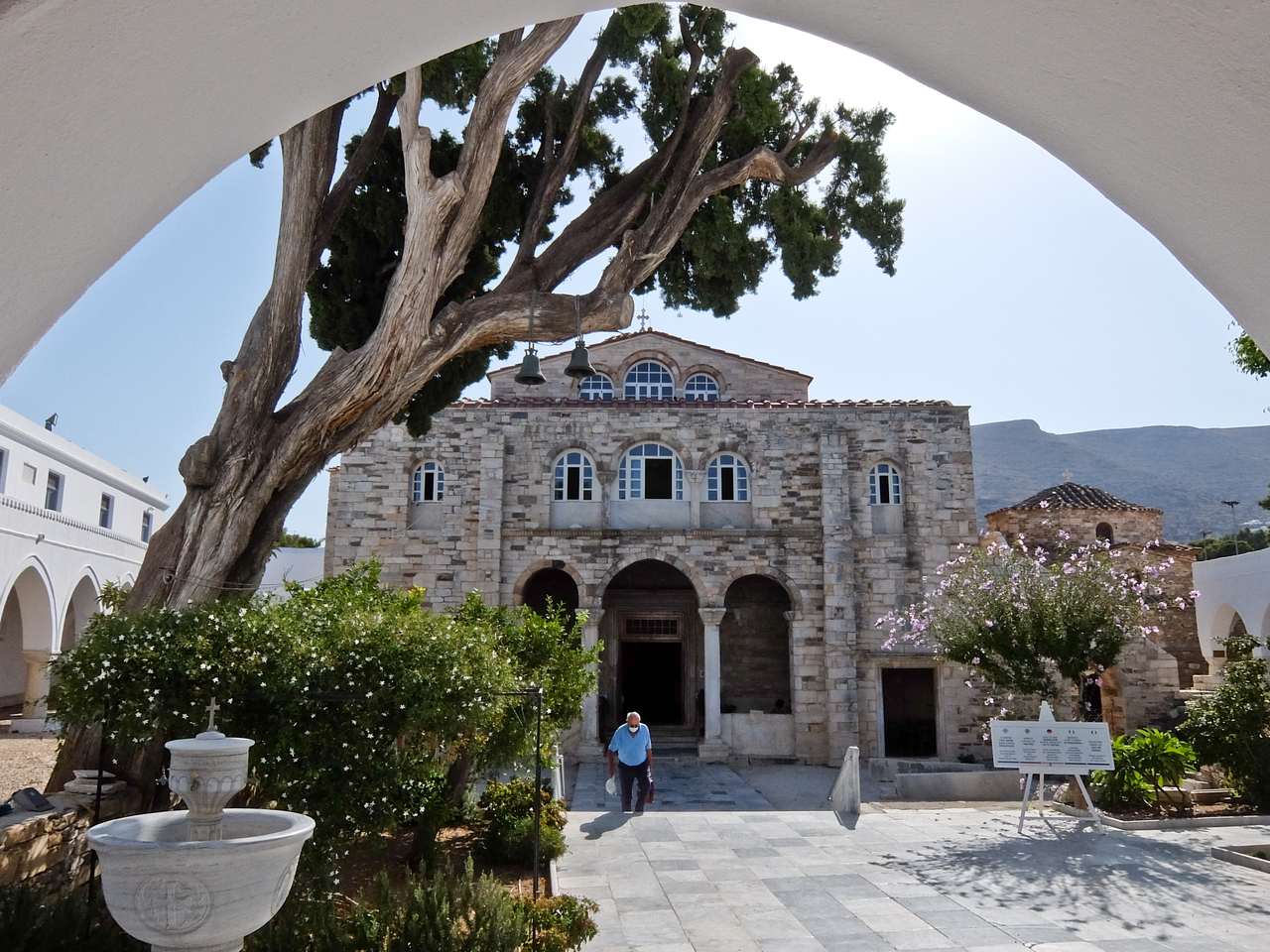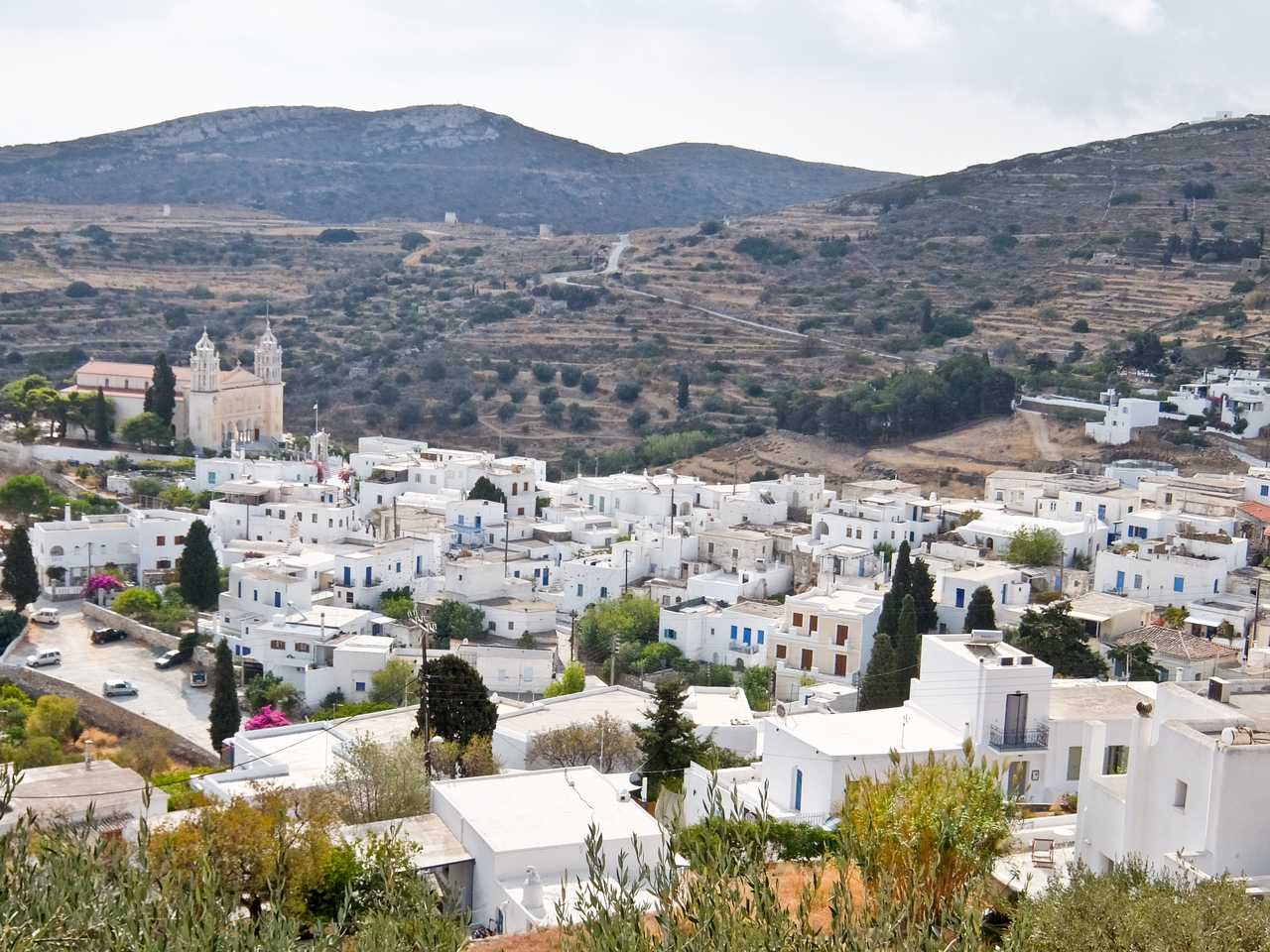I arrive in Paros in the dark on the ferry from Athens and am immediately drawn to the strip of bars and restaurants lining the harbour front. Although it’s getting near 11pm most are still open and I settle for a pork souvlaki.
I was last here nearly 40 years ago so this is an exercise in nostalgia and it doesn’t disappoint. Diced pieces of meat with salad plus a few fries topped with yoghurt in pitta bread, washed down with a carafe of local wine, does the job.
Paros still retains its island character with no big hotels and meandering narrow roads. Planning regulations limit the height of buildings and specify white for the walls, with a choice of only four colours for the woodwork, blue being the most prominent.
The countryside is peppered with snow-white villages and blue-domed churches and the population is around 15,000.
Parikia

Next morning I get to explore the town behind the busy harbour. It’s a labyrinth of narrow lanes, too small for cars, with artisan boutiques surrounding the ruins of the Kastro, a small ruined tower built by the Venetian Duke Marco Sanudo in 1260.

The Panagia Ekatontapyliani, dating from AD 326, is actually three distinct churches, surrounded by a great wall to protect its holy icons from pirates. The chapel of Áyios Nikólaos is an adaptation of a pagan building dating from the early fourth century BC while the rest was built in the sixth century and altered after an earthquake in the eighth century. The Byzantine buildings are in the shape of a Greek cross and there are apparently one hundred doors.
Naoussa

Half an hour to the North East is this stylish resort with an attractive marina. It was once a sleepy fishing resort but now its shores are lined with excellent restaurants and an ever-expanding number of chic beachside hotels, cafes and bars.
As usual, the old town is a maze of narrow, whitewashed streets but it’s worth climbing up to the church for a view over the large Plastira Bay. There are good beaches nearby.
Lefkes

I climb up to Lefkes in the centre of the island, the capital of Paros during the middle Ages when piracy was rife. It sits in a natural amphitheatre surrounded by ruined windmills on the skyline, its white houses tumbling down the hillside.
Nowadays it’s a sleepy little place with narrow alleys home to numerous cats. A Byzantine footpath passes through here, linking both coasts, a great walk if you have the time.
Marathi
Paros is known for the purity and transparency of its marble and in classical times supplied around 70% of Greek sculpture. The ancient marble mines lie just outside Lefkes at Marathi and the last slabs were quarried in the nineteenth century for Napoleon’s tomb. This was the end of a tradition that began in 3200 BC and the stone was extracted from deep galleries by the light of oil lamps. Marked paths lead to two huge entrances which you can explore with a torch and strong shoes.
The Beaches
Paros is full of sandy beaches so you’re spoilt for choice. South of Parikia, on the west coast, is Pounta, a hub for water sports activities, with shallow water making it ideal for all levels of windsurfing or kiteboarding.
Following the coast round to the other side is Hrysi Akti (Golden Beach), with good swimming, windsurfing and diving operations. Further north is the attractive village of Pisso Livadi with a small harbour and attractive restaurants.
Nearby is Kalogeros, a hidden cove near Molos, which contains deposits of Azul, a blue rock which you pound with water and paint on your body. Locals say that when you wash it off, it makes your skin smooth like a fish. It certainly feels good, but unfortunately, I leap into the sea before it’s had its proper chance to work its magic.
Fact File
FLY: Wizzair has cheap flights from London Luton to Athens.
GETTING AROUND: Paros is a ferry hub so ideal for island hopping. The boat from Piraeus takes around five hours, with Naxos less than an hour away. Although there are limited bus services on the islands, a hire car is useful.
STAY: Hotel Anthippi has a handful of simple rooms above the town.
EAT:
Taverna Paros, in the centre of Parikia, serves good value traditional dishes.
Piatsa, in Naoussa, serves excellent fish.
MORE INFO:
Imagine Paros has information about the island and the tourist office is in the windmill by the port.
Visit Greece has information about the country.

